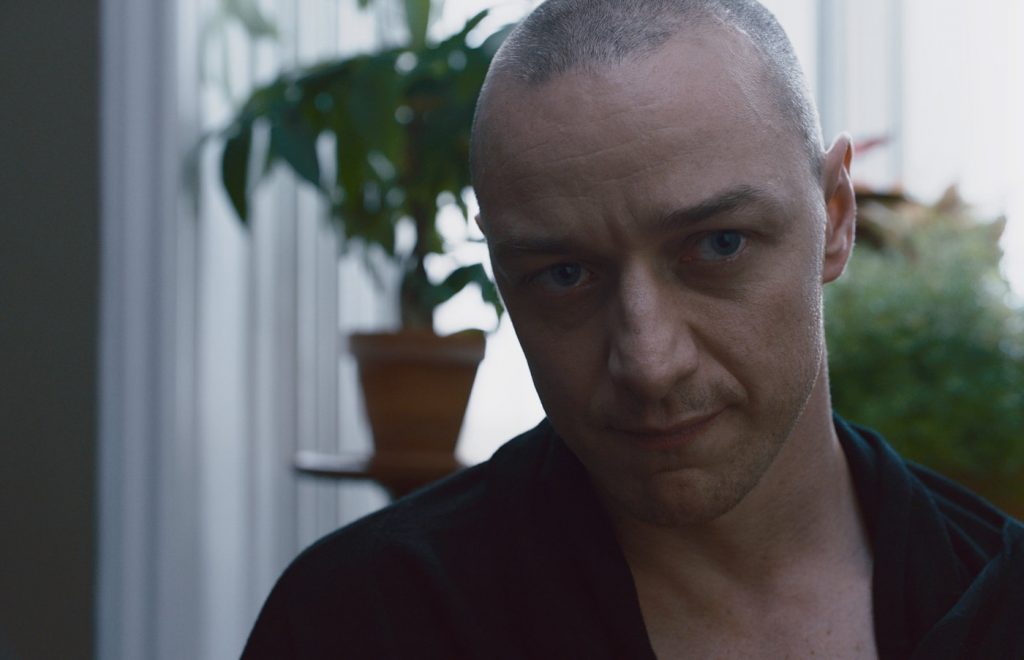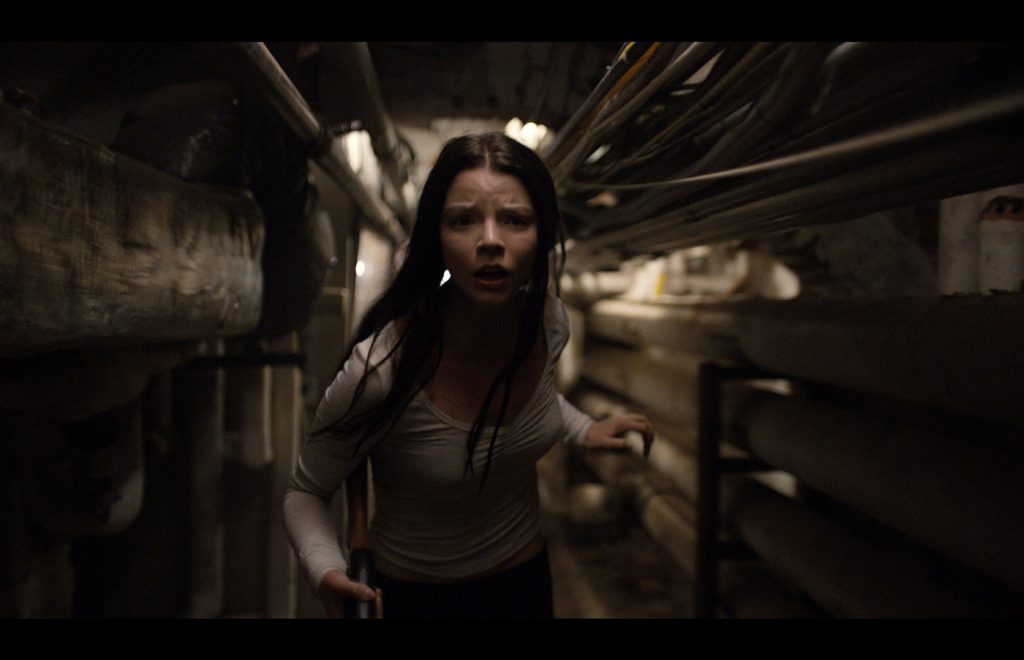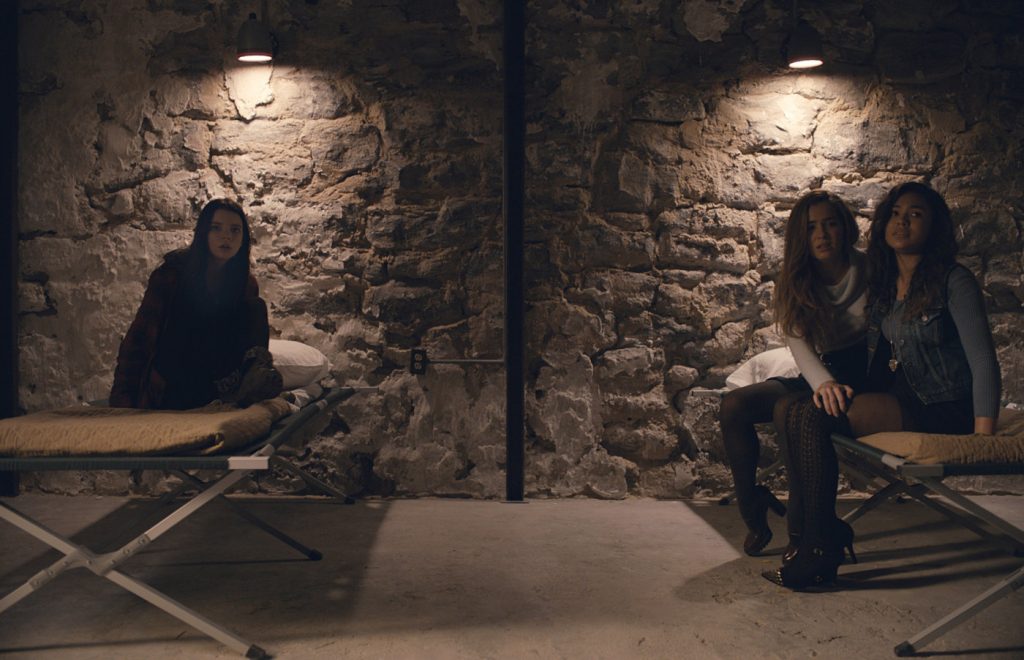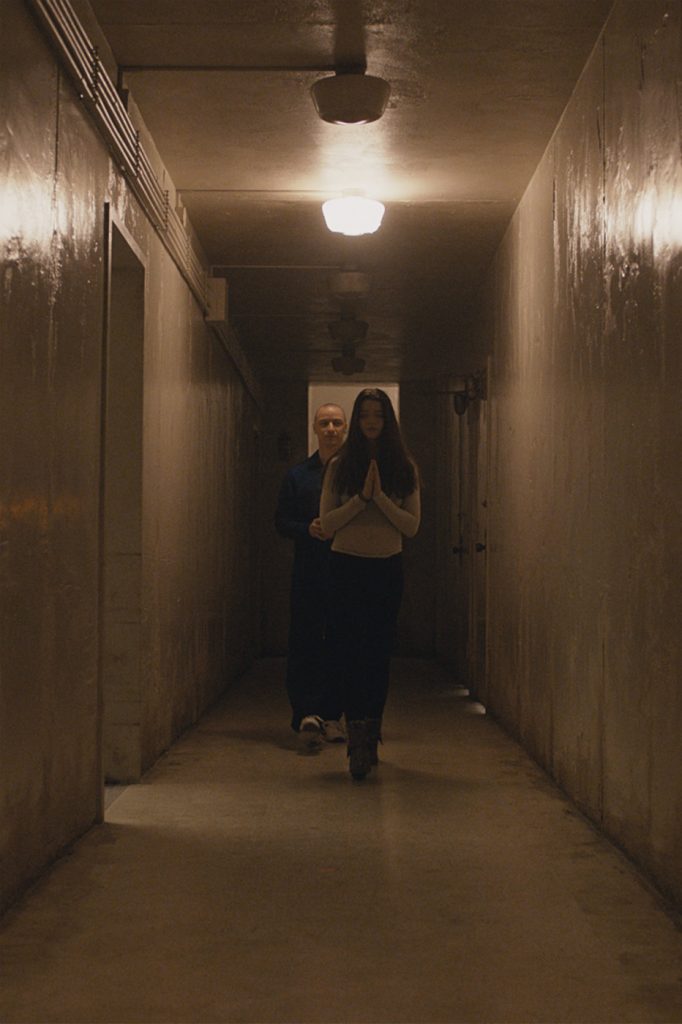With Split, writer-director-producer M. Night Shyamalan returns to the horror genre, which had put him on the map with such films as The Sixth Sense and Signs.
Grade: B

Split delves into the mysterious operation of one man’s fractured and disturbed mind.
Following last year’s breakout hit The Visit, Shyamalan reunites with producer Jason Blum for this terrifying thriller.
James McAvoy gives a terrific performance as Kevin, a man who has evidenced 23 personalities—each with unique physical attributes. He seems to be trusting his psychiatrist, Dr. Fletcher (Betty Buckley) as he discloses to her his multiple facets. But there remains one that’s still submerged, threatening to materialize and dominate all the others.

The thriller kicks off when Kevin abducts three teenage girls, led by the willful and observant Casey (Anya Taylor-Joy). Most of the narrative deals with the girls’ fight for survival, as he goes into crisis mode that throws off balance the walls between his compartments, shattering them apart.
Moviegoers were first introduced to the mysterious universe of Shyamalan in 1999 with the global blockbuster, The Sixth Sense, which was followed by such blockbusters as Unbreakable and Signs.
In 2015, the filmmaker made his terrifying The Visit, which grossed almost $100 million worldwide. Following the same model as that movie’s production—and to allow for complete creative freedom—Shyamalan made the decision to return to his independent roots by self-financing Split.

“I want to make something new with every single film by doing something that nobody’s ever done,” Shyamalan says. “That’s exciting, but also dangerous and problematic, especially when selling it to the world.”
After the global success of The Visit, Shyamalan again teamed up with Blum and his Blumhouse Productions for Split.

Blum, known for his innovation in producing small-budget films, says of the discusses the partnership: “He can tell these extraordinarily character-driven stories against a backdrop of a larger subject matter. Split isn’t a typical small-budget film; it’s a large vision on limited budget. It is not CGI that makes Split feel so epic—it’s Night’s incredibly provocative story.”
With the film’s intimate setup, Shyamalan was able to focus on the story and character development by eliminating some of the variables that come with a larger film. “It’s easy to knock me out of my comfort zone, which is a reason why I make smaller movies,” Shyamalan says. “I can turn down certain factors so I can hear that creative voice telling me if something we’re doing is off track.”
Shyamalan pitched the idea for Split with Rajan, his longtime collaborator and president of production for Shyamalan’s Blinding Edge Pictures. “I was blown away. I thought it was the perfect film–it’s a convergence of all the types of stories he tells,” Rajan says. “He scribbled some ideas and a couple of scenes on a piece of paper, and they were all just riveting.”

Blum responded to the drama and how the film didn’t follow typical thriller conventions. “Audiences will enjoy Split on both a visceral ‘popcorn’ level, and at the same time, it will force them to reflect on human nature, which is the real underlying theme and preoccupation of Night’s career.”
Shyamalan’s style goes beyond a single genre. “Each film is uniquely his own,” says executive producer Schneider. “He weaves together folktales, legends and other narratives, and blends them with his background and experience. All of his films cover complex themes and characters, and I was amazed by the depth of Split.”
Schneider believes audiences will not only be entertained by Split, but they will be challenged by it. “My hopes are as ambitious as Night’s that the film’s strength in storytelling will spark debate about the complexities of human identity,” he says.

Whether it was looking into clairvoyance for The Sixth Sense, superhuman strength for Unbreakable or sundowning for The Visit, Shyamalan starts his stories with ideas inspired by phenomena in the natural world. But that is simply a beginning point: Shyamalan then takes his characters’ journeys to an extraordinary realm, letting narrative arcs arise from the struggles of the characters themselves.
As a storyteller, Shyamalan pairs comprehensive research with pure imagination. His films in the suspense and supernatural genres lead him to draw from the mysterious and fascinating, using those premises as building blocks for his imagination and ask, simply, “What if?”
Shyamalan explains: “I’m taking something you believe and pushing it into the fantastic realm. I wondered what would happen if, in Dissociative Identity Disorder, each individual personality believes they are who they are, 100 percent. If one personality believes they have diabetes or high cholesterol, can their body chemically change to that belief system? And what if one personality believed it had supernatural powers? What would that look like?”
During his time at NYU, Shyamalan took courses in which the subject of Dissociative Identity Disorder (DID) was discussed, and over the years, the filmmaker has remained fascinated by theories surrounding the diagnosis.
When Shyamalan started to craft the Split screenplay, he read a great deal about the most documented cases—and these stories of those involved made a huge impact on his imagination. To inform his supernatural tale, Shyamalan spoke with psychiatrists in the field and gained practical knowledge about how therapists would conduct themselves in sessions with patients in this population. That inquisitiveness fleshed out the characters who became Kevin and Dr. Fletcher.
“This film is a convergence of skillsets and storytelling that Night brings to this medium, and there’s an incredible ride at the center,” says Rajan. “The performances are stunning, and I think that will resonate with audiences.”
As a specific and precise director hailing from the school of Hitchcock, Shyamalan labors over every scene. “Night’s a perfectionist, and he obsessively storyboards each shot to make sure he’s following his original vision,” producer Bienstock says. “He wants every shot, every moment to be the very best, and that’s inspiring.”
The look of Split is also very specific. “It’s a dark film but visually stunning with a beautiful color palette and use of shadows,” says Blum. “Night has an unparalleled talent for creating dread and fear in the seemingly mundane and commonplace, which makes the film quietly threatening instead of overt or in your face.”










